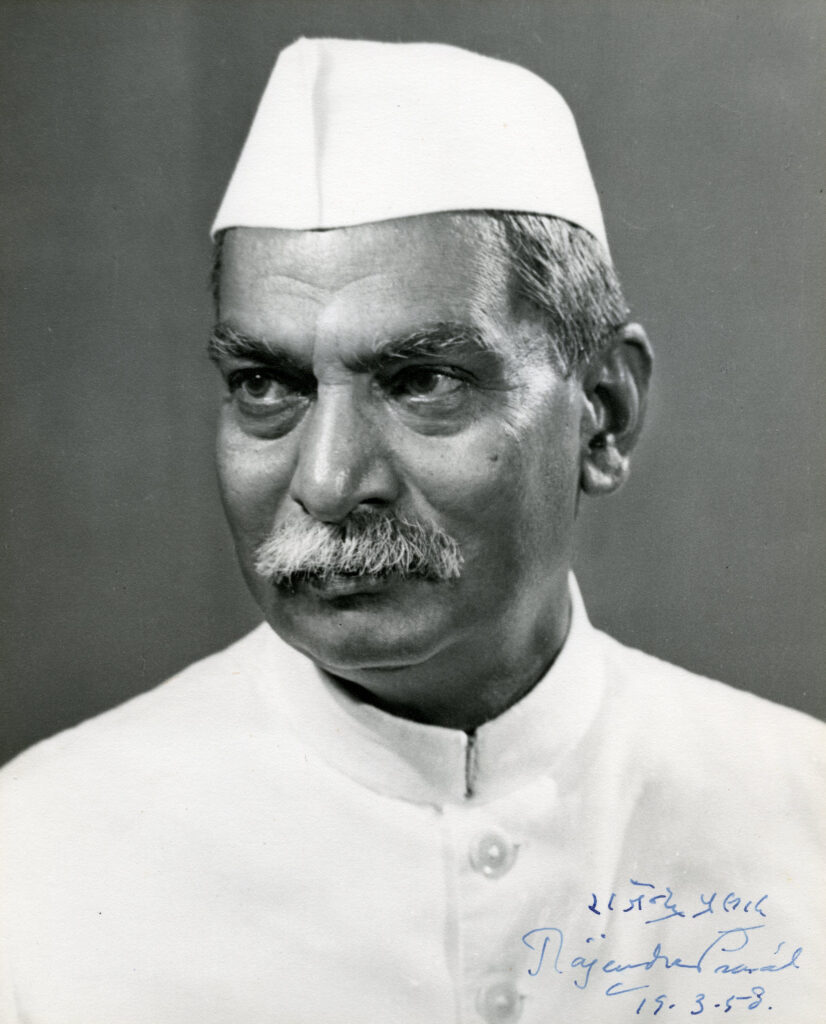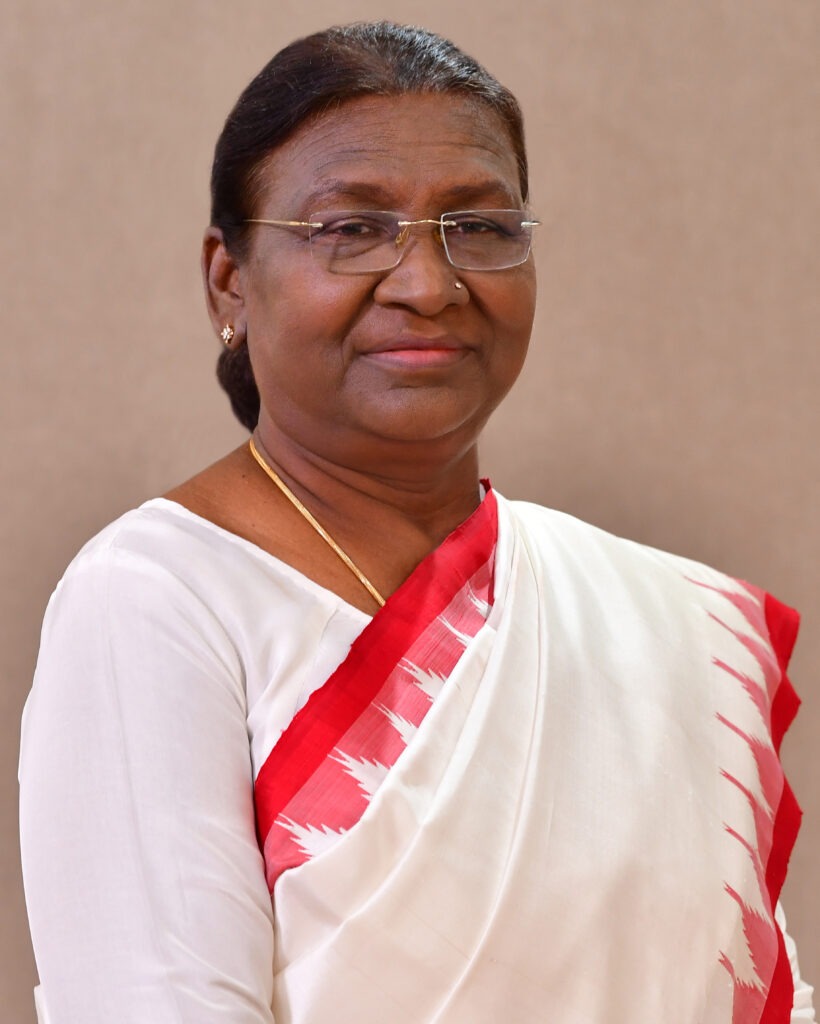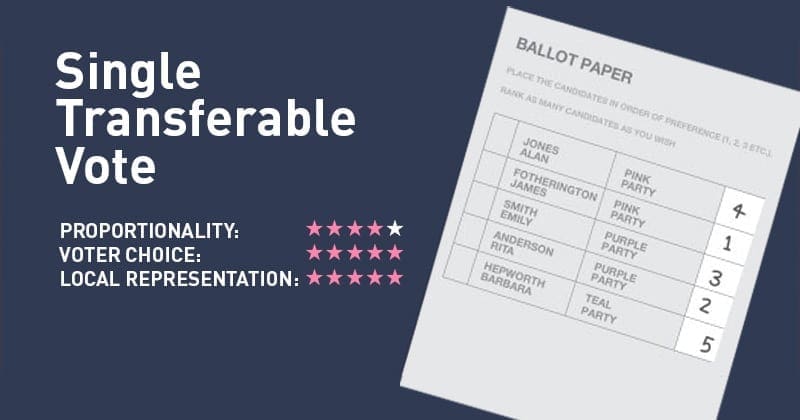|
President of India
The Union executive consists of the President of India and the Council of Ministers headed by the Prime Minister. The structure of the Union Executive closely resembles the British Model. It is of the Parliamentary type in so far as the council of ministers is responsible to the Lok Sabha. Read more about the President of India in detail with Prepp AI.
About President of India
- The President is the head of the Indian State and the formal executive.
- He is the first citizen of India and acts as a symbol of Unity, Integrity and Solidarity of the nation.
- All the executive action at the center is expressed to be taken in his name.
- He acts on ministerial advice and therefore, the Prime Minister and the Council of Ministers constitute the real and effective executive.
- Dr. Rajendra Prasad, the first President of India and a stalwart of the Freedom Movement held the position from 26th January, 1950 to 1962.
- Smt. Droupadi Murmu, the current and 15th President, held the position on July 25, 2022.
According to Dr. B. R. Ambedkar,
“Under the Constitution, the President occupies the same position as the King under the English Constitution. He is the head of the state but not of the executive. He represents the nation but does not rule the nation. He is the symbol of the nation. His place in the administration is that of a ceremonial device on a seal by which the nation’s decisions are made known.”


Election of the President of India
President of India is elected through electoral college system for fixed term. Dr. Ambedkar and Nehru considered election by the expanded electoral college as equivalent to direct election based on adult franchise.
Qualifications for election
A person or candidate to be eligible for election as President should fulfill the following qualifications –
- He should be a citizen of India.
- He should have completed 35 years of age.
- He should be qualified for election as a member of Lok Sabha.
- He should not hold any office of profit under Union Govt. or any state govt. or any local authority or any other public authority.
Oath or Affirmation by the President
The oath of the office to the President is administered by the Chief Justice of India and in his absence, the seniormost judge of the Supreme Court available.Any other person acting as President or discharging the functions of President also undertakes the similar oath or affirmation. In his oath, the President swears the following –
- to faithfully execute the office,
- to preserve, protect and defend the constitution and the law and
- to devote himself to the service and well-being of the people of India.
Term of President
- The President holds office for a term of 5 years from the date on which he enters upon his office.
- He can resign from his office any time by addressing the resignation letter to the Vice-President.
- He can also be removed from the office before completing of his term by the process of impeachment.
Impeachment of President
- An impeachment is a quasi-judicial procedure in the parliament. In this, two things should be noted that –
- The nominated members of either house of Parliament can participate in the Impeachment of the President though they do not participate in their election;
- The elected members of the legislative assemblies of states and UTs of Delhi and Puducherry do not participate in the Impeachment though they participate in their election.
- The impeachment process can be initiated by the either houses of Parliament. These charges should be signed by 1/4th members of the house that framed the charges and a 14 days notice should be served to the President. After the impeachment resolution is passed by the majority of 2/3rds of the total membership of that house, it is sent to the other house, which should investigate the charges.
- No President has so far been impeached.
Vacancy in the President’s Office
The office of President can be vacant only due to the following –
- On the expiry of his tenure of 5 years – In case any delay in the election of new President for any reason, the outgoing President continues to hold the office beyond his term of 5 years until his successor assumes charge.
- By his death or resignations or his removal by the process of impeachment –
- In case of removal, resignation, death or otherwise, then election to fill the vacancy should be held within 6 months from the date of occurence of vacancy.
- The Vice-President acts as the President until a new President is Elected.
- Otherwise, if he becomes disqualified to hold the office or when his election is declared void.
Procedure of election of President
Nomination
- Before the voting, comes the nomination stage, where the candidate for election to the office of President must be subscribed by atleast 50 electors as proposers and 50 electors as seconders.
- These proposers and seconders can be anyone from the total members of the electoral college from the State and National Levels.
- An elector cannot propose or second the nomination of more than one candidate.
- This rule of getting electors to propose and second a person’s candidature was adopted in 1974 after the Election Commission realised that in the 1952, 1957, 1962, 1967 and 1969 polls, several candidates submitted their names even though they did not have “even a remote chance of getting elected.”
- Every candidate has to make a security deposit of Rs. 15000 in the Reserve Bank of India. The security deposit is liable to be forfeited in case the candidate fails to secure 1/6th of the votes polled.
Voting/Elections
- The elections are conducted and overseen by the Election Commission of India.
- A candidate, in order to be declared elected to the office of President, must secure a fixed quota of votes.
- The nominated members of both the houses and state legislatures are not allowed to vote in the presidential election.
- The President is elected indirectly by an electoral college consisting of the elected members of both Houses of Parliament and the Legislative Assemblies of States and UTs (Delhi and Puducherry) (Article 54).
- President is elected by the system of proportional representation by means of Single Trasnferable Vote and the voting is by Secret Ballot. The Constitution prescribes two principles for the election –
- State’s inter se are given uniformity or near uniformity in the scale of representation,
- a parity is established between the states on a whole and the Union of India.
- The ECI has directed that the Ballot Papers should be printed in two colours –
- Green – For Members of Parliament
- Pink – For Members of Legislatures

- Party Whip or Anti-Defection Law does not apply in this election.
- The notification for the election of the President can be issued by the Election Commission on any day within the period of 60 days before the expiry of the term of office of the outgoing President.
- By convention, the Secretary General, Lok Sabha or the Secretary General, Rajya Sabha is appointed as the Returning Officer, by rotation.
- In this presidential elections, a disabled or illiterate elector cannot take the help of a companion to record his vote but allowed to only get assistance from the Presiding Officer to record his vote.
- An election to the Office of the President can be challenged by means of an election petition presented to the Supreme Court after the election is over.
- Both the house Lok Sabha and Rajya Sabha member’s vote value is same.
Vote Value


- The Constitution (84th Amendment) Act, 2001 provides that until the population figures for the census-2026 is taken & published, the population of the States for the purposes of calculation of value of the votes for the Presidential Election shall be considered as of 1971 census.
- Among all the States of India, Uttar Pradesh followed by Maharashtra, West Bengal and Bihar has the highest vote value. And Sikkim has the least vote value in this election.
Why to chose indirect election?
Some members of the constituent assembly criticised the system of indirect election for the President as undemocratic and proposed the idea of direct election. Following reasons will clarify why to choose indirect election over the direct election –
- President is only a nominal executive and the real powers are vested in the council of ministers headed by the Prime Minister. It would have been anomalous to have the President elected directly by the people and not give him any real power.
- The direct election of President would have been very costly and time and energy consuming due to the vast size of the electorate.
- Apart from this, indirect election was designed to help electing a statesman who was not directly involved in party politics.
Powers and Functions of the President
The powers enjoyed and the functions performed by the President can be classified under the 7 broad categories –
1. Executive Powers
- All executive actions of Govt. of India are formally taken in his name.
- He appoints the following –
- Prime Minister,
- Other Ministers of the Union,
- Attorney-General for India,
- Comptroller and Auditor-General of India,
- Judges of the Supreme Court,
- Judges of the High Courts of the States,
- Governor of State,
- Finance Commission,
- Chief Election Commissioner and other members of Election Commission,
- Chairman and members of UPSC etc.
- He can seek any information about the administration of affairs of Union and proposals for Legislation from the Prime Minister.
- He can require Prime Minister to submit for consideration of the council of ministers any matter on which decision has been taken by a minister but which has not been considered by the council.
- He can appoint a commission to investigate into the conditions of SCs, STs, and other Backward Classes.
- He can appoint an inter-state council to promote Centre-State and Inter-State Cooperation.
- He directly administers the UTs through the administrators appointed by him.
- He can declare any area as Scheduled Area and has powers with respect to the administration of Scheduled Areas and Tribal Areas.
2 Legislative Powers
